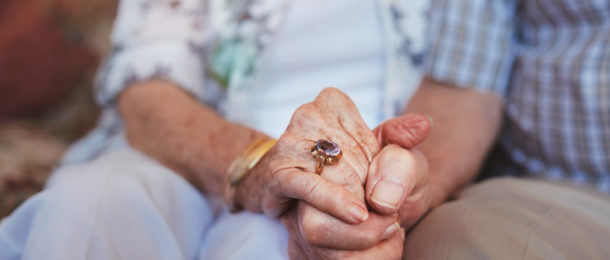Aging In Place Is A Realistic Option In Spite Of Mobility Issues

Growing older can mean an increasing loss of mobility for many people. As age and health conditions causing chronic pain take their toll, getting around, even at home, can become challenging.
Eventually, that can make certain life decisions necessary for the sake of health and safety.
Thankfully, there are ways to modify residences which allow seniors to age in the comforts of home.
Aging in place.
North Americans are growing older.
The number of seniors in Canada is projected to more than double by 2036, reaching 9.8 million, and seniors in the U.S. are projected to reach 98 million by 2060.
A significant portion of older adults suffer with health concerns such as arthritis that cause chronic pain and reduce mobility.
Thanks to design concepts oriented toward “aging in place,” more seniors than ever before are able to grow older and remain independent in their own homes, in spite of mobility loss.
To age in place, seniors can modify their homes for better accessibility, and more new homes are being built with aging in place in mind than ever before.
Many people assume accessible changes will feel institutional. However thanks to the popularity of aging in place, some experts point out modifications can be comfortable and attractive.
Easy modifications.
Many of the home modifications helpful to seniors are simple and inexpensive, yet they go a long way toward eliminating risk of injury.
For instance, SFGate suggests installing supportive handrails on both sides of indoor and outdoor stairwells.
Eliminating slipping and tripping hazards such as ottomans and piles of magazines can make a big difference in increasing safety in the home.
Adding nonslip tape strips to stair steps and shower and bath areas can also help seniors avoid accidents, and shower and bath safety can be improved with a seat in the shower stall, a handheld spray nozzle for seated washing, and the installation of grab bars.
Simply improving visibility in the home can be a boon.
Consider reflective tape on changes in step heights, increasing natural daylight with sheer curtains, and adding nightlights in commonly traveled dim areas, such as the bedroom, hallway, and bathroom.
Installing brighter light bulbs can also help, and adding under-cabinet task lighting in the kitchen can make food preparation easier.
Exchanging traditional light switches for motion-activated light switches or even rocker switches can help as well.
Other easy modifications include such things as lever-style door handles and faucet handles, non-scald devices on water faucets, and garage door openers.
More advanced changes.
Depending on the situation, many seniors opt for more advanced home modifications.
Homes with steps to the entrance can be re-graded, or a ramp can be installed for safer and easier movement from the car and into the home.
Doorways can be widened for easier accommodation of assistive devices, light switches can be lowered, and outlets can be raised to be reached more easily.
Some seniors benefit from push-button appliances.
A fully accessible walk-in shower can help avoid slips and can make transitioning in the bathroom easier.
Some professionals suggest an open floor plan and easy-care landscaping. And as Huffington Post notes, ideally seniors should enjoy one-floor living spaces.
This can mean turning a home office into a master suite, or moving laundry facilities from the basement to the kitchen, bathroom, or bedroom area.
Moving ideas.
Sometimes modifying a home isn’t a practical solution.
Many seniors prefer not to live with the mess of remodeling or the hassles of arranging for contractors.
Thankfully, accessible homes are increasingly available.
Seniors can use online filters to search for accessible homes for sale in desired areas.
For example, you can find accessible homes in Thousand Oaks, CA, with a median listing price of $900K. Using an aging-in-place accessibility checklist helps seniors find the right home to meet their needs.
Chronic pain and loss of mobility due to age and health conditions such as arthritis don’t mean seniors need to give up their independence.
Homes can be modified to accommodate their needs.
Thanks to aging-in-place design, older adults can safely remain in their homes.
This is a guest blog post written by Kent Elliot, author of “Aging in Place One Project at a Time: DIY Home Modifications That Don’t Require a Professional“. You can find his book here.

